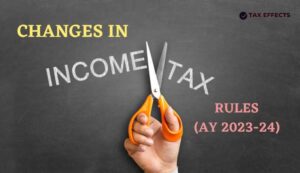
Income Tax Audit – Meaning, Applicability, Objective, Due date of filing tax audit, Penalties for not filing
In this article, we will discuss in detail about Tax Audit & its applicability under Section 44AB of the Income Tax Act, 1961. Tax Audit
Home » Income tax updates

In this article, we will discuss in detail about Tax Audit & its applicability under Section 44AB of the Income Tax Act, 1961. Tax Audit

LTA or leave travel concession is the allowance paid by your employer to cover your travel expenses, while you go on leave with or without

In this article, we will discuss about the difference between Financial Year (FY) & Assessment Year (AY) & changes made in the income tax rules

In this article, we will discuss about Life Insurance Policy Taxation Rules. Important points that need to be considered in case of taxability of Life

In this article, we will discuss Summary of Income tax notice issued under section 148A & 148 for not reporting income in ITR & its

In this article, we will discuss about the Tax Deducted at Source (TDS) all sections & amendments in detail. Tax Deducted at Source (TDS)

Taxability of Gifts received by an Individual or Hindu Undivided Family (HUF) Any sum of money or property received by an individual or a

In this article, we will discuss about Section 139(8A) – Updated Return in detail. Updated Return – Section 139(8A) A new provision under section



In this article, we will discuss about the difference between Financial Year (FY) & Assessment

In this article, we will discuss about Life Insurance Policy Taxation Rules. Important points that

In this article, we will discuss Summary of Income tax notice issued under section 148A



In this article, we will discuss about Section 139(8A) – Updated Return in detail. Updated
It is always the knowledge which makes people empowered. Therefore, our effort through this website is to help others by sharing knowledge which is useful for them.
We provide tax related articles which is useful for various stakeholders starting from Students, Traders, Tax Practitioners, and the public at large.